One of the remarkable aspects of studying nature is how quickly my awareness and attention develop. Years ago, I could take a walk and not have much to report except the weather conditions. Now, when I head out for my daily walk, especially in the spring and summer, I return home with a list in my head of the plants that are blooming, forming a plan for some wildcrafting.
Wildcrafting is the activity of gathering herbs, plants, or fungi. For me, it means I carry a basket and clippers on my daily walks. Some of the medicinal plants I gather are labeled as weeds that made their way from Europe. Many carry a legacy of healing for many generations of people.
“What is a weed? A plant whose virtues have not yet been discovered.”
― Ralph Waldo Emerson
As the summer solstice approaches, a delicate, bright sunshine-yellow, five-petaled, star-shaped flower begins to bloom. Like a proper wild weed, it is a lover of poor soils and can be found along roadways, near ditches, and in fields. There are several native North American species in the Hypericum genus, but it is the European native St. John’s Wort (Hypericum perforatum) that contains the red-purple medicinal oil.
By the late 1800s, St. John’s Wort (SJW) had become well established throughout the globe and was eventually added to noxious and invasive plant lists by seven states in the US and twenty countries. A noxious listing is a legal designation designed to protect agriculture because the plant can be toxic to horses, cattle, goats, and sheep if eaten in large quantities. In some animals, including humans, it causes photosensitivity, resulting in severe sunburn.*
* Individuals who experience photosensitivity because of health conditions or pharmecutical use should avoid using St. John’s wort.
The invasive listing indicates that, given its preferred environment of poor and disturbed soils, the plant has the potential to outproduce native vegetation, eventually replacing the local flora. I don’t find SJW to be invasive in my immediate area, and my annual harvests of the flowers prevent seeds from forming and spreading. Commercial seeds for cultivating St. John’s Wort cannot be sold in California and Washington State, but you can easily gather them in the autumn from the wild.
This 1-3 foot tall erect plant generally blooms around the Feast Day of St. John the Baptist (June 24th), thus its name (wort is an old medieval word for plant), and can bloom for several weeks. The species name, perforatum, makes identification of this medicinally beneficial plant easy; when held up to sunlight or under a microscope, the leaves have translucent little holes or perforations that contain oil glands.
Medicinal Uses
Disclaimer: Be a responsible and informed user of botanical medicine. Do not use herbs you are not familiar with, especially if pregnant, nursing, or using pharmaceutical drugs.
Depression & Mood Regulator
For several decades, SJW has been promoted for treating depression and seasonal affective disorder, despite little clinical evidence that supports its effectiveness. Depression can be complicated, and many factors can influence its causes and severity. Anyone seeking to use botanical medicine to help with depression should work closely with a clinical herbalist who can help determine the proper protocol and pathway to serve the client best.
Herbalist Rosalee de la Foret shared how a few herbalists use SJW to regulate mood: “Some herbalists recommend St. John’s Wort specifically for people experiencing depression due to Seasonal Affective Disorder. This is one area where its poetic and complex relationship with the sun really shines. Herbalist David Winston recommends St. John’s Wort for GI-based or hepatic depression, when a person may have a sour stomach and a sour attitude. My friend and colleague, Christophe Bernard, specifically uses it for the elderly who have lost their taste for life and have a dark view of life.”1
Nerve Pain
My own experience with St. John’s Wort has shown it to be a powerful topical remedy for alleviating nerve pain. I make a salve using the SJW-infused oil, sometimes combining it with cayenne-infused oil. When the sharp pain of sciatica pops up, I immediately apply the salve to the affected area. For several years, I made large batches of SJW salve for my mom, who suffered from diabetic neuropathy pain in her feet. Herbalists also use SJW to treat the pain of an outbreak of Herpes and the related virus that causes shingles.
Liver Stagnation and Health
Whenever people ask me if herbs truly work, I tell them about the power of SJW on the liver. Regularly taken internally as a tea or tincture to promote liver health, SJW speeds up the waste-clearing metabolic processes in the liver so effectively and quickly that pharmaceutical drugs are removed before they can do their intended work. This is referred to as a Herb-Drug Interaction, and if taking pharmaceutical drugs, people should always check with a clinical herbalist or pharmacist before using any botanical medicine.
Harvesting and Making SJW Oil
St. John’s wort can be harvested and dried for use in a tea, but to make an effective tincture or infused oil, fresh flowers and buds must be used.

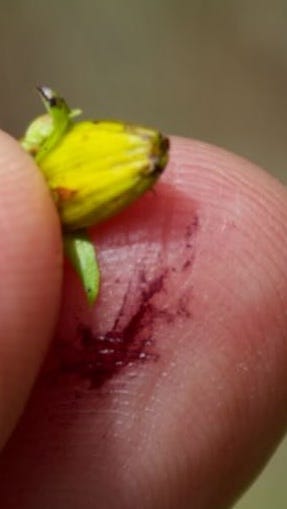
To infuse fresh SJW flowers in oil, I use freshly harvested buds and some open flowers; timing is essential, as the buds open quickly.
Loosely fill a canning jar with finely chopped flowers and pour olive oil to cover them thoroughly.
Use a chopstick to gently push down the plant matter until it is evenly coated.
Cover the jar with a paper coffee filter (or cheesecloth) and secure it with a rubber band. This cover allows moisture from the fresh plant material to evaporate.
Place the jar outside in the sun - this is necessary because the sun interacts with the plant material to create the magical red oil.
Once the oil has become a dark red, strain it several times to remove all plant residue. Store in a jar in a dark cabinet.
Natural Dye for Fiber
Depending on the procedure and mordants used, St. John’s Wort flowers offer a range of dye colors for wool fibers from a single dye pot: green, deep red, maroon, and yellow. Using plant tops, which include stalks and leaves, various shades of brown are produced. A large amount of plant material is needed for the dye pot, so this summer, I hope to find a small invasion of these magical weeds.
https://www.herbalremediesadvice.org/st-johns-wort-health-benefits.html
Thank you for being here. All of my posts are free, but if you’d like to support my work, you can do so by:
Liking and restacking this post so others are encouraged to read it.
Share this post via email or on social media.
Taking out a paid subscription to this Substack.





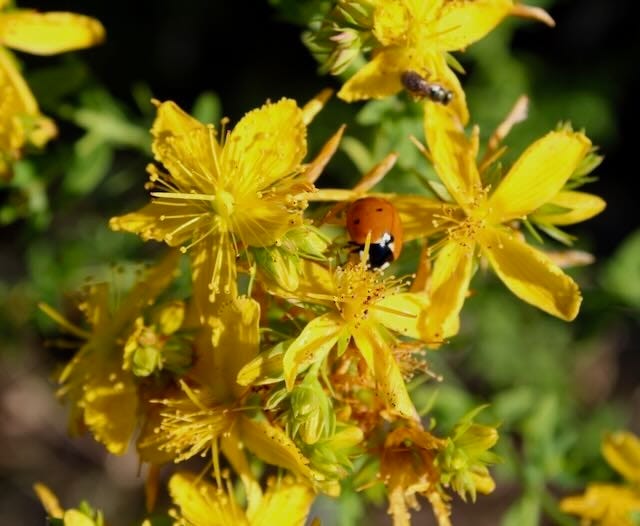


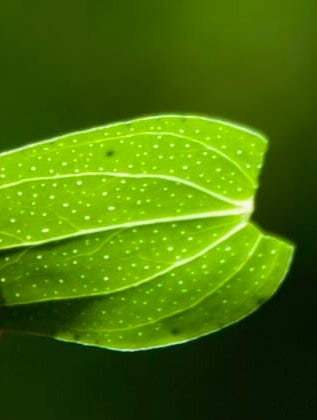
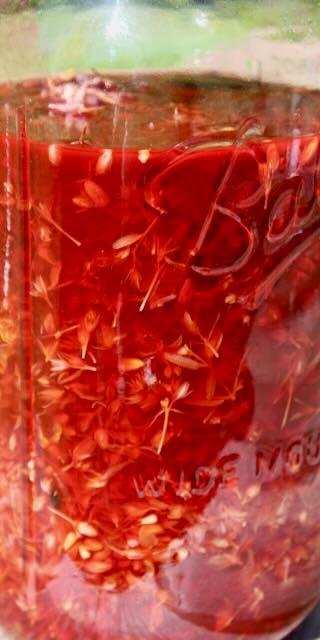
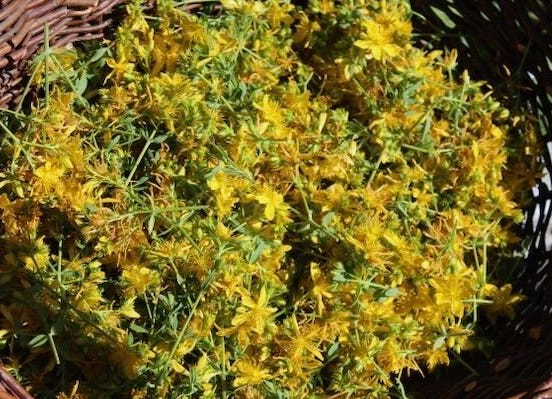
Thanks for the thorough look at European St. John's Wort and its many medicinal uses. I especially appreciate that in harvesting the flowers and buds, you are keeping your local populations in check! I would only add that the photosensitivity is a real issue for those of us with Lupus and other autoimmune diseases, and those who are taking pharmaceuticals that can cause photosensitivity. So caution is very important. Enjoy your wildcrafting!
How interesting! I learned a ton about St. John's Wort (not to mention what the word "wort" means). The colors that the plant yields are surprising, as are all of its remedy powers. Are you going to try dying yarn? Thank you for this fun and informative post!